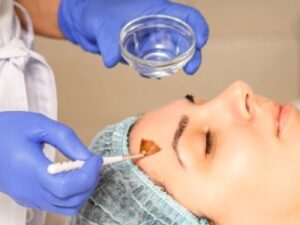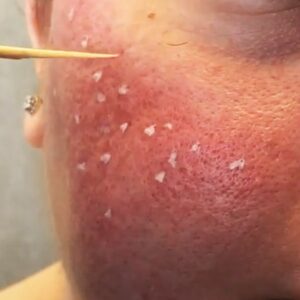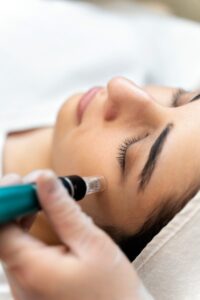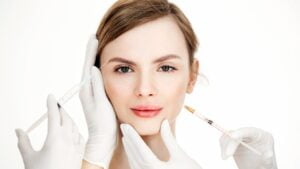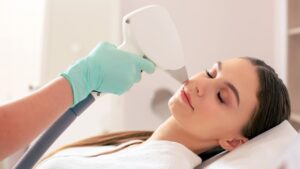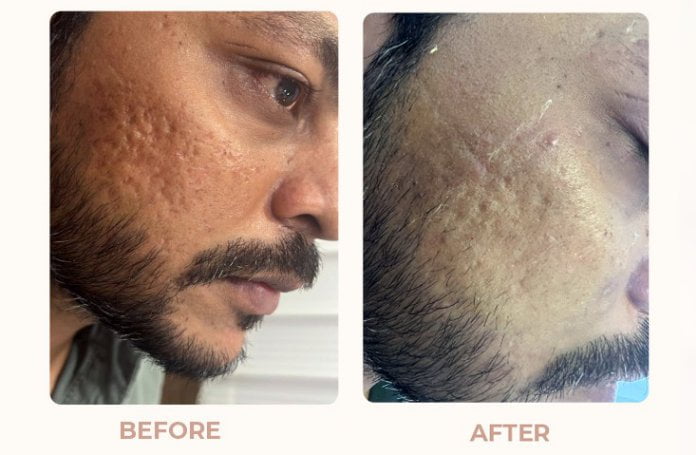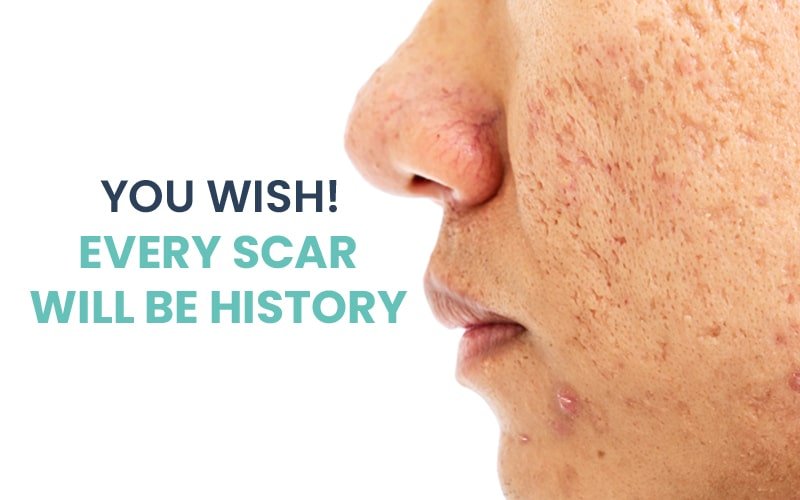

Laser Scar Removal Treatment: Enhance Skin Renewal and Get Confidence!
ACNE SCAR REMOVAL TREATMENT IN INDIA AND COST GUIDE
TYPES OF ACNE SCAR
There are mainly 2 types of scar
- 1. Atrophic
Atrophic scars are most common on the face. A depressed scar sits below the surrounding skin. They’re formed when not enough collagen is made while the wound is healing. There are three types of atrophic scars:
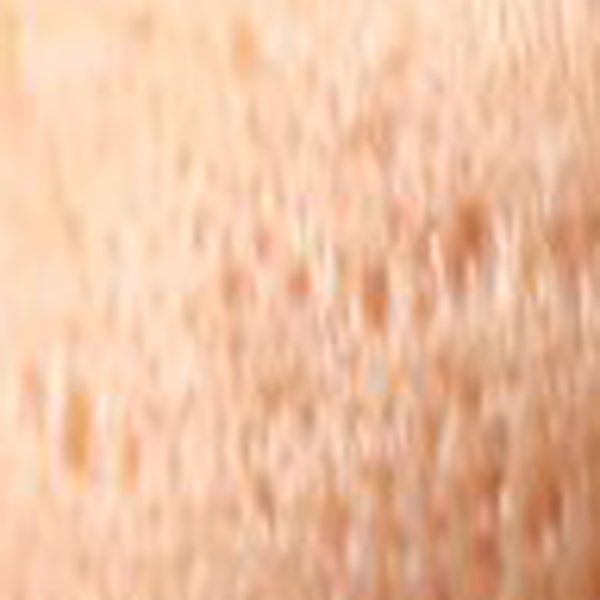
Ice pick scar
The scar with small, deep hole in the surface of the skin that look like the skin has been punctured with a sharp object.

Boxcar scar
Scar with round or oval depressions with steep vertical sides.
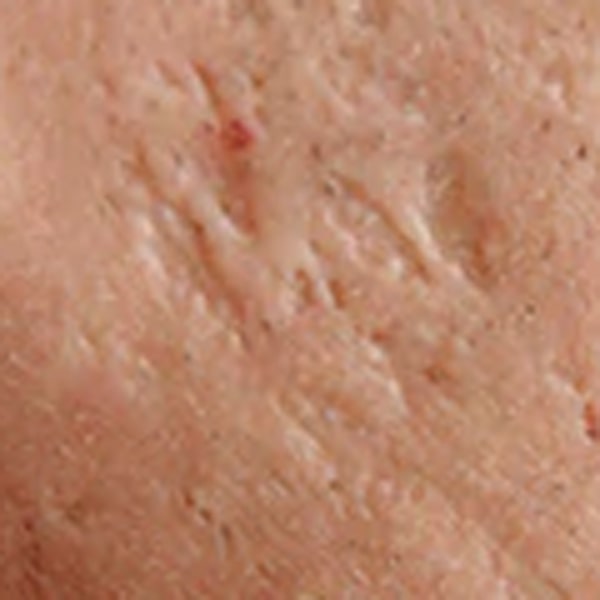
Rolling scar
This type of scarring causes rolling wave-like shape.
- 2. Hypertrophic scar
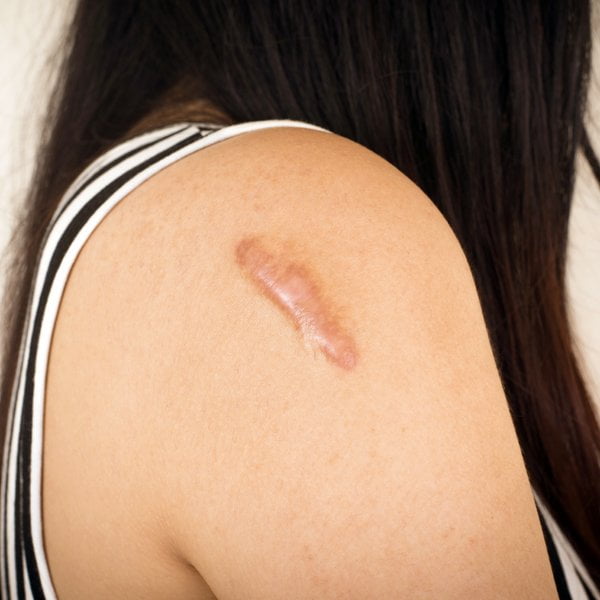
Hypertrophic Scar
Hypertrophic scars are most common with chest and back acne. They stand above the surface of the surrounding skin and are caused by too much collagen during healing. Discoloration left behind after acne can be named as post – inflammatory pigmentation which are red or black colored.
HOW TO PREVENT ACNE SCAR
The most important step to stop the chance of scarring is trying to reduce inflammatory breakouts as much as possible which means you may have to consult with a dermatologist as soon as possible to get your acne under control. More importantly, the best way that you can avoid scarring is to not squeezing a pimple nor picking a scab that protect the skin like a natural bandage.
NON-INVASIVE TREATMENTS FOR MILD TO MODERATE SCAR
Chemical peeling is the process of applying chemicals to the skin to destroy the outer damaged layers. It accelerates the normal process of exfoliation. Different agents have different depths of penetration, and therefore, chemical peels can be divided into four different groups – very superficial penetration, superficial penetration, medium depth penetration and deep penetration based on the histologic level of necrosis that they cause. Peels like glycolic acid, trichloroacetic acid, jessners solution, pyruvic acid, salicylic acid.
Using high strength of peeling agents to treat icepick or box scars to apply with fine wooden tooth pick TCA of 75-100% concentration to the bottom of scar.
This technique mechanically ablates damaged skin in order to promote re-epithelialization. Dermabrasion completely removes the epidermis and penetrates to the level of the papillary or reticular dermis, inducing remodeling of the skin’s structural proteins.
A technique to develop bruising which develops collagen with help of rolling device studded with microneedles. Results start to see from 6 weeks till 3 months.
Dermal fillers are injected into the skin to raise depressed areas of acne scars or stimulate the skin’s natural production of collagen. It includes hyaluronic acid , polymethyl methacrylate microspheres with collagen (Bellafill), poly-L-lactic acid (Sculptra).
CO2 laser resurfacing vaporizes tissue at a depth of 20 to 60um and zones of thermal necrosis ranging another 20 to 50um. Energy at 10.600nm wavelength is absorbed by both intracellular and extracellular water, causing rapid heating and vaporization of tissue. Dermal heating below the zone of ablation induces a wound-healing response, which causes collagen remodeling and heat-mediated tissue contraction. The Nd:YAG laser is used on patients with darker or more sensitive skin. These lasers cool the surface of the epithelium while also penetrating the deeper layers of the skin with infrared wavelengths. These wavelengths target the underlying water and collagen without disrupting the epidermal layer. Thermal damage serves as the stimulus for inflammatory mediator release, fibroblast activation, neocollagenesis, and dermal remodeling. MNRF Laser Micro needling Radio Frequency, also called MNRF is an advanced technique which is combination of both traditional micro needling and novel radiofrequency. Needle penetration triggers formation of various growth factors and collagen formation.
This technique consists of two phases: collection of the graft and placement of the graft. The injection phase with small parcels of fat implanted in multiple tunnels allows the fat graft maximal access to its available blood supply.
It shows best results when combined with laser treatment. It may be combined with growth factor concentrate.
In new roots clinic we have researched and given best results with combination of therapies as per shape and size of scar likewise combination of peeling with TCA, followed by subcision, and finally fractional laser irradiation with PRP.
SURGICAL TREATMENTS FOR MODERATE TO SEVERE SCAR
- Punch excision
- A minor surgery called as punch excision is carried out to reduce acne scars. In this surgical process, dermatologist surgeon cuts out individual acne scars and fixes the wound with skin grafts or stitches. For skin graft, some portions of skin is taken from the area where healthy skin is located.
- Subcision
- Subcision is a procedure in which a needle is inserted under the skin and passed in multiple directions. Subcision is best utilized for rolling acne scars. The mechanisms of scar improvement are releasing fibrotic strands underlying scars, organization of blood in the induced dermal pocket, and connective tissue formation in the area.
WHY NEW ROOTS
COST OF ACNE SCAR TREATMENT IN NEW ROOTS
This are light acne scars which includes treatment procedures like fractional co2 and TCA cross which costs around Rs.3000/- Rs.10,000/- per session.
This are rolling or boxcar which involves procedures like subcision, TCA cross and co2 laser. Each session costs around Rs. 3000/- to Rs.10,000/-
This scar which are hypertrophic involves best treatments like MNRF laser treatment followed by chemical peels and PRP therapy. Each session costs around Rs.3000/- to Rs.10,000/-
BEST ACNE SCAR TREATMENT IN INDIA
Scar treatment involves 4-6 sessions for initial mild to moderate acne scars and requires more sessions for severe scars and even longer time duration. Our doctors examine skin type and severity of scar and decide best suitable course of treatment.
DURATION OF SCAR TREATMENT
Mild scar
2-5 months
Moderate scar
4-8 months
Severe scar
6- 20 months
